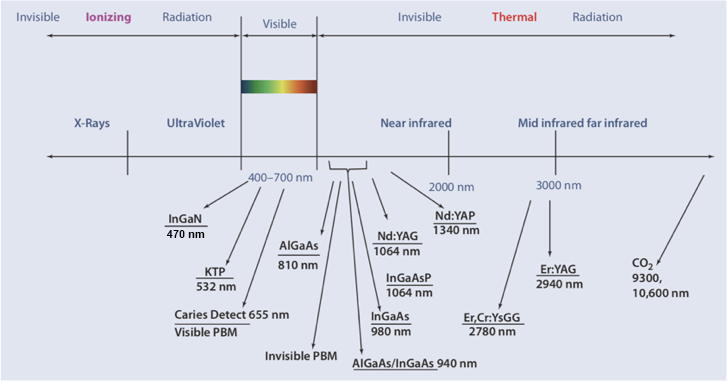
2022-09-09 4352
Laser therapy is a medical method widely used in the field of human medicine. It can improve microcirculation, reduce inflammation, relieve pain, and promote tissue healing non-invasively and without side effects. Now it is also becoming a standard item in major pet hospitals. Many people have heard of the professional terms such as wavelength, power, frequency and pulse, ultra-pulse, target tissue, and treatment methods involved in the clinical process of laser physiotherapy. Today, Lunray will systematically take you to understand these terms at one time. meaning and the rationale behind it.
Wavelength
The laser wavelength determines how deeply the photons enter the tissue. Shorter wavelengths can be better absorbed by superficial tissues and accelerate tissue healing on the surface of the skin; longer wavelengths have better penetrating ability, easily penetrate the skin into the deep tissue, relieve pain, enhance immunity, and regulate nerve function , promote tissue regeneration, improve microcirculation, speed up the repair of diseased tissue and so on.
650nm accelerates the healing of skin surface tissue, and the wavelength of 650nm is greatly absorbed by melanin in the skin. Since this wavelength of laser light can inhibit bacteria and promote cell growth, laser physiotherapy has incredible effects in wound healing and scar tissue regulation. 810nm accelerates ATP production, and oxidases, which determine how efficiently cells convert oxygen molecules into ATP, have the highest absorption efficiency at 810nm. Regardless of the molecular state of the enzyme, when it absorbs photons, it accelerates the process and increases cellular ATP production. 980nm improves blood microcirculation. Pet blood contains a lot of water molecules. The movement of water molecules transports oxygen molecules and takes away the metabolic waste produced by cells. The 980nm laser is at the absorption peak of water molecules. Water molecules absorb laser energy and convert it into heat, thereby increasing the temperature distribution of cells and promoting the improvement of microcirculation.
Power
If wavelength determines the penetration depth of laser energy, then power determines its saturation at the target depth. The unit of power is watt (W), which is the rate of laser energy transfer, which refers to the number of radiation photons that can be transferred in 1 second. The power multiplied by the time is the total energy that can be delivered to the tissue by one laser therapy session, which is the total dose. The target tissue must receive a certain dose to elicit a clinical response, so the dose must be able to reach the target tissue. The more power received at the surface of the tissue, the more energy will penetrate into the tissue to the required depth for treatment.
Frequency and Pulse
Studies have shown that different pulse frequencies can elicit different physiological responses. For example, lower pulse frequencies and continuous waves are better at regulating pain, while higher frequencies are more anti-inflammatory, so different tissue types (muscles). , connective tissue or bone, etc.) select different pulse frequencies.
Target Organization
Hair and skin color and hair thickness can affect laser penetration. In biological tissues, the content of melanin is positively correlated with the absorption of shorter wavelengths in the near-infrared band, so dark skin or hair will absorb more laser energy; Short wavelengths, resulting in reduced dose delivered to deep tissues. In order to avoid the occurrence of the above situation, the actual tissue condition and correct irradiation method should be selected in the treatment, which can reduce the influence of the target tissue on the effect of laser physiotherapy.
Treatment Method
Direct Contact Therapy: This is the technique used when treating most patients. If the pet's hair is long, it is recommended to shave or comb the hair to help the laser energy be better transmitted. In most cases, especially when using high power and continuous wave (CW), the treatment is performed in scanning mode, moving the irradiation in a slow, orderly manner against the skin at a speed of approximately 3 cm/sec. Another treatment approach is to use a grid pattern point-to-point irradiation close to the skin, but this can only be done at low power or pulsed, 1-3 seconds per point.
Indirect Contact Therapy: Indirect contact therapy is suitable for open wounds or any area with secretions or exudates, and also for painful/sensitive areas. Non-contact treatments are almost always performed in scanning mode. The treatment head is 1-2 cm away from the surface of the affected area, moves slowly at a speed of 3 cm/s in the area to be treated, and expands the irradiation range to about 2-5 cm of healthy tissue around the wound. The other hand can be used to remove the hair during the treatment.